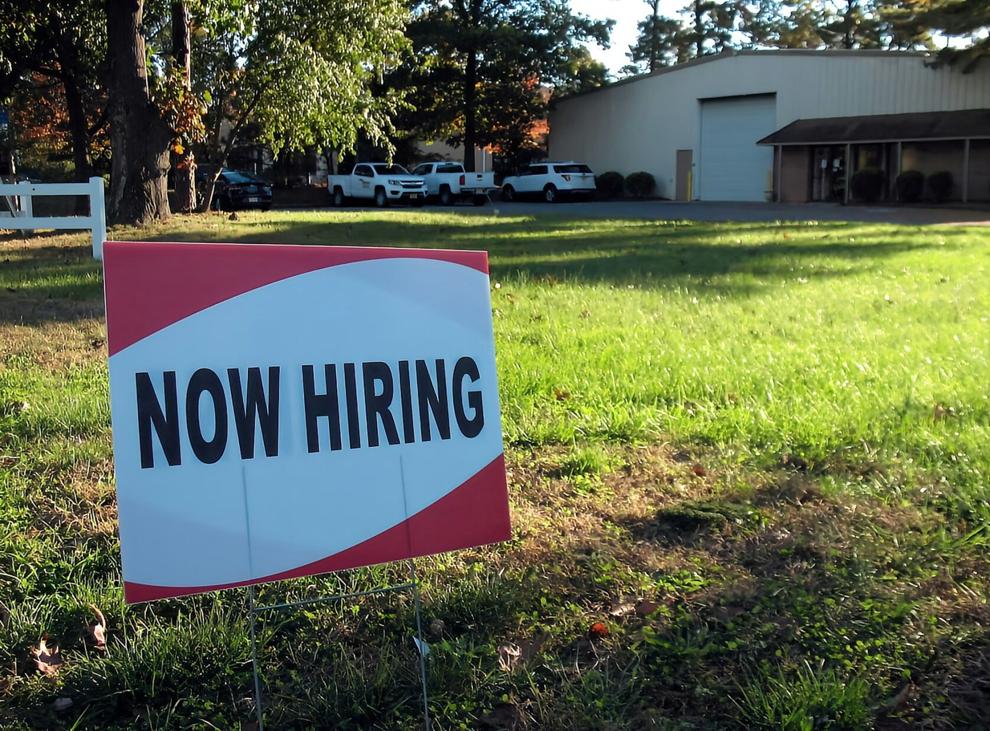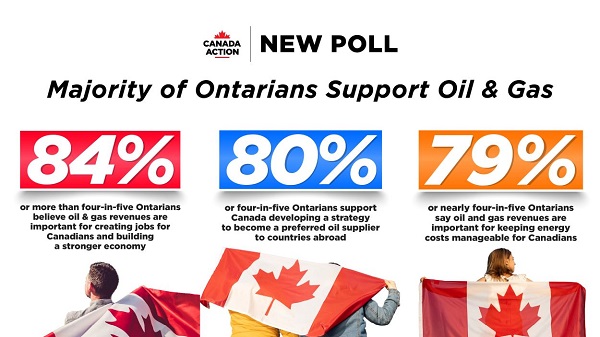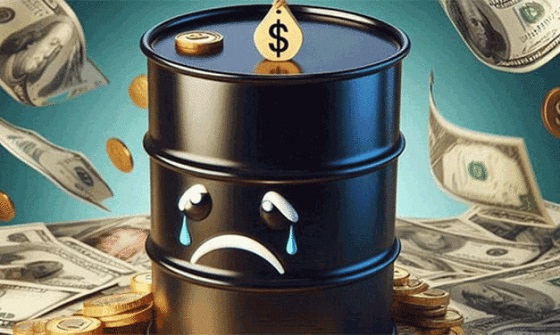Business
Tips From Tundra – Optimize Your Resume For ‘The New Normal’

The landscape of employment for job-seekers has changed dramatically since the beginning of the pandemic in Alberta. As of May 2020, the Alberta Government reports an unemployment rate of 15.5%. Combine that with experienced employees furloughed from various sectors, new graduates and those seeking a new career direction may have a steeper hill to climb than before. We continue to discover what is the new normal for Alberta post-pandemic, we revisit the topic of how to put your best foot forward when optimizing your resume for your job hunt.

Tundra Technical Solutions is a global recruitment agency headquartered in Toronto, Ontario. Since 2004, Tundra has grown quickly, today operating offices across North America, Europe and Asia. They work with top global partners actively seeking the best talent in multiple sectors such as finance, insurance, healthcare, technology, retail, energy, utilities, construction, mining, telecommunications, transportation and government to name a few.
Ever considered utilizing the skills a recruitment agency may have to offer? It may be the right time considering the volume of applicants in the hundreds on certain job postings, as shown in the image below. We spoke with Christina Esposito, Marketing and Communications Lead and Internal Recruiter for Tundra Technical Solutions on ways to optimize your resume for recruiters in the new normal.

(Source: LinkedIn Job Search)
Should your resume be written chronologically or functionally?
The key difference here is whether or not your work experience should be written as a timeline of your previous positions or should it be laid out in the form of what experience you feel is best suited for the position you are applying for. From a recruiters perspective, Christina mentions:
“We like to see a reverse chronological order of previous work experience. We recommend placing all of your technical skills right at the top of your resume, and then go into your most recent experience.”

Should you tailor your resume for the specific job you are applying for?
Say you are actively applying to open positions, tailoring your resume can be a time consuming task if your objective is to apply to the first 10-20 open positions you find. To that point, applying to everything you see can be detrimental to your efforts when utilizing a recruiter. Keep in mind, there is a human processing your candidate profile, and their efforts are to find the best talent for their employers. Christina offers a recommendation that can mitigate time for both the job seeker and recruiter:
“ we absolutely want to see someone tailoring their resume that matches the job description. A good tip for someone who might not want to go through a whole overhaul, is to first make sure that the job you’re applying to is relevant to your experience, recruiters can see if you’re applying to the first jobs that pop up for example. It becomes clear they haven’t really looked into the position they’re applying for. So, a lot of care and detail should go into those applications if you want to have the greatest success. Ultimately you want to make sure that the job description lines up with your skills…”

What is the best resume format that can be read autonomously through recruitment software?
As mentioned above, some positions can receive hundreds of applications. If you haven’t been made aware by now, recruiters utilise software called an Applicant Tracking System (ATS) or what is referred to as resume parsing, which allows the hundreds of resumes to be read and processed, thus creating a candidate profile highlighting the most relevant information to send to an employer. Say you spent endless hours on the most aesthetically pleasing resume to give that ‘wow’ factor, that may have been a solid practice in the past, but ATS systems have difficulty processing these resume formats, thus your candidate profiles could be lacking important information.
“I would recommend against a PDF format. The reason being is that Microsoft Word documents are the most legible and easiest to parse with. The way the ATS works is, someone sends in the application, the ATS picks those keywords from their resume and matches them to the actual job description. Inserting images or a lot of text can make it difficult for recruiters to look up your profile in the future.”
What should NOT be included on your resume?
Some of these you may already know, but let’s be clear, having a resume with only relevant information is your best chance of success. Working as a retail store manager I had received countless resumes from individuals seeking employment. During that time, I had encountered some of the most outrageous and creative resumes from all walks of life. By no means am I a recruitment specialist, but sticking to the basics was a winner for my new hires during that time. Christina offers the perspective of a recruiter for what not to put on your resume:
“Jumping right into things like objectives or hobbies is fine, but we would recommend against it because the longer you make your resume, you can decrease the chances of someone reading the full document. Best practice is to always keep your resume one to two pages with only relevant information. For industry veterans that have lengthy work history, you should only list the most recent and relevant experience.”
Should you include links to your social media?
Social media plays a significant role in the recruitment process for both agencies and hiring managers. LinkedIn has become a major part of what we call this ‘new normal’, with more than 20 million companies listed on the site and 14 million open jobs, it’s no surprise that over 75% of people who recently changed jobs used LinkedIn to inform their career decision. When it comes to social media, Christina offers her recommendations:
“90% of the time, recruiters are looking at your LinkedIn or Twitter. We want to make sure we get a holistic view of the applicant. 40% of our hires last year were candidates we sourced directly from LinkedIn. We have situations where we have candidates that look great on paper, but after we do some investigating. He/she doesn’t actually prove to be the person he/she was saying on paper. It’s a point of validation and puts a face to a name. My recommendation would be to keep your social media profiles clean, descriptive and showcase your accomplishments, especially if you have a public profile.”
This information should offer you some insight into how the employment landscape is changing and what best practices to implement for your job hunt. Who wouldn’t want to save time and effort on what can be an arduous task?

If you would like to learn more about Tundra Technical Solutions, speak to one of their experienced recruiters or to view their available positions in Alberta, check out their website here or message them on their Facebook below.
For more stories, visit Todayville Calgary
Business
Socialism vs. Capitalism

People criticize capitalism. A recent Axios-Generation poll says, “College students prefer socialism to capitalism.”
Why?
Because they believe absurd myths. Like the claim that the Soviet Union “wasn’t real socialism.”
Socialism guru Noam Chomsky tells students that. He says the Soviet Union “was about as remote from socialism as you could imagine.”
Give me a break.
The Soviets made private business illegal.
If that’s not socialism, I’m not sure what is.
“Socialism means abolishing private property and … replacing it with some form of collective ownership,” explains economist Ben Powell. “The Soviet Union had an abundance of that.”
Socialism always fails. Look at Venezuela, the richest country in Latin America about 40 years ago. Now people there face food shortages, poverty, misery and election outcomes the regime ignores.
But Al Jazeera claims Venezuela’s failure has “little to do with socialism, and a lot to do with poor governance … economic policies have failed to adjust to reality.”
“That’s the nature of socialism!” exclaims Powell. “Economic policies fail to adjust to reality. Economic reality evolves every day. Millions of decentralized entrepreneurs and consumers make fine tuning adjustments.”
Political leaders can’t keep up with that.
Still, pundits and politicians tell people, socialism does work — in Scandinavia.
“Mad Money’s Jim Cramer calls Norway “as socialist as they come!”
This too is nonsense.
“Sweden isn’t socialist,” says Powell. “Volvo is a private company. Restaurants, hotels, they’re privately owned.”
Norway, Denmark and Sweden are all free market economies.
Denmark’s former prime minister was so annoyed with economically ignorant Americans like Bernie Sanders calling Scandanavia “socialist,” he came to America to tell Harvard students that his country “is far from a socialist planned economy. Denmark is a market economy.”
Powell says young people “hear the preaching of socialism, about equality, but they don’t look on what it actually delivers: poverty, starvation, early death.”
For thousands of years, the world had almost no wealth creation. Then, some countries tried capitalism. That changed everything.
“In the last 20 years, we’ve seen more humans escape extreme poverty than any other time in human history, and that’s because of markets,” says Powell.
Capitalism makes poor people richer.
Former Rep. Jamaal Bowman (D-N.Y.) calls capitalism “slavery by another name.”
Rep. Alexandria Ocasio-Cortez (D-N.Y.) claims, “No one ever makes a billion dollars. You take a billion dollars.”
That’s another myth.
People think there’s a fixed amount of money. So when someone gets rich, others lose.
But it’s not true. In a free market, the only way entrepreneurs can get rich is by creating new wealth.
Yes, Steve Jobs pocketed billions, but by creating Apple, he gave the rest of us even more. He invented technology that makes all of us better off.
“I hope that we get 100 new super billionaires,” says economist Dan Mitchell, “because that means 100 new people figured out ways to make the rest of our lives better off.”
Former Labor Secretary Robert Reich advocates the opposite: “Let’s abolish billionaires,” he says.
He misses the most important fact about capitalism: it’s voluntary.
“I’m not giving Jeff Bezos any money unless he’s selling me something that I value more than that money,” says Mitchell.
It’s why under capitalism, the poor and middle class get richer, too.
“The economic pie grows,” says Mitchell. “We are much richer than our grandparents.”
When the media say the “middle class is in decline,” they’re technically right, but they don’t understand why it’s shrinking.
“It’s shrinking because more and more people are moving into upper income quintiles,” says Mitchell. “The rich get richer in a capitalist society. But guess what? The rest of us get richer as well.”
I cover more myths about socialism and capitalism in my new video.
Business
Residents in economically free states reap the rewards

From the Fraser Institute
A report published by the Fraser Institute reaffirms just how much more economically free some states are compared with others. These are places where citizens are allowed to make more of their economic choices. Their taxes are lighter, and their regulatory burdens are easier. The benefits for workers, consumers and businesses have been clear for a long time.
There’s another group of states to watch: “movers” that have become much freer in recent decades. These are states that may not be the freest, but they have been cutting taxes and red tape enough to make a big difference.
How do they fare?
I recently explored this question using 22 years of data from the same Economic Freedom of North America index. The index uses 10 variables encompassing government spending, taxation and labour regulation to assess the degree of economic freedom in each of the 50 states.
Some states, such as New Hampshire, have long topped the list. It’s been in the top five for three decades. With little room to grow, the Granite State’s level of economic freedom hasn’t budged much lately. Others, such as Alaska, have significantly improved economic freedom over the last two decades. Because it started so low, it remains relatively unfree at 43rd out of 50.
Three states—North Carolina, North Dakota and Idaho—have managed to markedly increase and rank highly on economic freedom.
In 2000, North Carolina was the 19th most economically free state in the union. Though its labour market was relatively unhindered by the state’s government, its top marginal income tax rate was America’s ninth-highest, and it spent more money than most states.
From 2013 to 2022, North Carolina reduced its top marginal income tax rate from 7.75 per cent to 4.99 per cent, reduced government employment and allowed the minimum wage to fall relative to per-capita income. By 2022, it had the second-freest labour market in the country and was ninth in overall economic freedom.
North Dakota took a similar path, reducing its 5.54 per cent top income tax rate to 2.9 per cent, scaling back government employment, and lowering its minimum wage to better reflect local incomes. It went from the 27th most economically free state in the union in 2000 to the 10th freest by 2022.
Idaho saw the most significant improvement. The Gem State has steadily improved spending, taxing and labour market freedom, allowing it to rise from the 28th most economically free state in 2000 to the eighth freest in 2022.
We can contrast these three states with a group that has achieved equal and opposite distinction: California, Delaware, New Jersey and Maryland have managed to decrease economic freedom and end up among the least free overall.
What was the result?
The economies of the three liberating states have enjoyed almost twice as much economic growth. Controlling for inflation, North Carolina, North Dakota and Idaho grew an average of 41 per cent since 2010. The four repressors grew by just 24 per cent.
Among liberators, statewide personal income grew 47 per cent from 2010 to 2022. Among repressors, it grew just 26 per cent.
In fact, when it comes to income growth per person, increases in economic freedom seem to matter even more than a state’s overall, long-term level of freedom. Meanwhile, when it comes to population growth, placing highly over longer periods of time matters more.
The liberators are not unique. There’s now a large body of international evidence documenting the freedom-prosperity connection. At the state level, high and growing levels of economic freedom go hand-in-hand with higher levels of income, entrepreneurship, in-migration and income mobility. In economically free states, incomes tend to grow faster at the top and bottom of the income ladder.
These states suffer less poverty, homelessness and food insecurity and may even have marginally happier, more philanthropic and more tolerant populations.
In short, liberation works. Repression doesn’t.
-

 armed forces1 day ago
armed forces1 day agoRemembering Afghanistan and the sacrifices of our military families
-

 Fraser Institute1 day ago
Fraser Institute1 day agoHow to talk about housing at the holiday dinner table
-

 Frontier Centre for Public Policy1 day ago
Frontier Centre for Public Policy1 day agoTent Cities Were Rare Five Years Ago. Now They’re Everywhere
-

 Opinion1 day ago
Opinion1 day agoPope Leo XIV’s Christmas night homily
-

 Fraser Institute14 hours ago
Fraser Institute14 hours agoCarney government sowing seeds for corruption in Ottawa
-

 Alberta14 hours ago
Alberta14 hours agoAlberta Next Panel calls for less Ottawa—and it could pay off
-

 Alberta4 hours ago
Alberta4 hours agoAlberta project would be “the biggest carbon capture and storage project in the world”
-

 Energy4 hours ago
Energy4 hours agoNew Poll Shows Ontarians See Oil & Gas as Key to Jobs, Economy, and Trade










